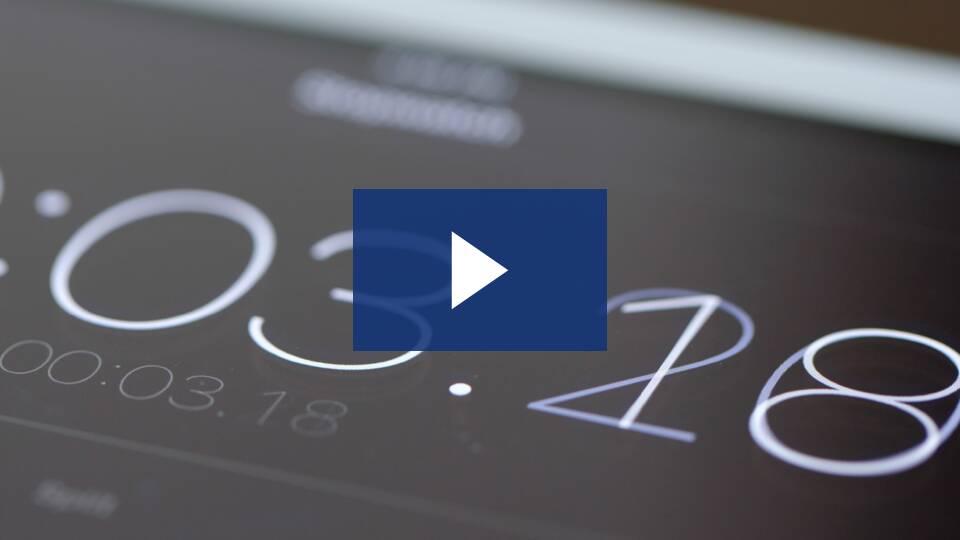
How to Reduce Patient Wait Times in Your Healthcare Practice
In managing a healthcare practice, one of the most critical challenges is minimizing patient wait times. Extended wait periods not only impact patient satisfaction but can also affect the overall efficiency of your clinic or hospital.
Recent studies reveal that as many as 30% of patients have abandoned appointments due to prolonged waits, with the average patient wait time hovering around 18 minutes and, in some cases, extending to nearly 50 minutes.
For healthcare professionals, reducing these wait times is essential to enhance patient experience, decrease no-show rates, and optimize clinical operations. This article will explore effective strategies to streamline patient flow and reduce waiting periods in your medical practice.
Understanding the Impact of Patient Wait Times
As you might expect, lengthy wait times greatly impact patient satisfaction. That’s not all, though. A long waiting time also correlates to poorer health outcomes, which can prove fatal to patients with chest pain, head injuries, and other life-threatening conditions.
Many patients will simply leave if the doctor can’t see them at a convenient time. That can result in poor patient reviews about the average wait time and a hit to your reputation.
The Patient’s Perspective
It may be helpful to think about patient waiting time from the patient’s perspective. The patient didn’t arrive late; they’ve already filled out the necessary forms and provided their insurance information before seeing you, as a new patient should.
They have done their part and expect their physicians to be on time. However, they end up hanging out in the waiting room for 30+ minutes. With each minute that passes, patients get more annoyed. If the office staff doesn’t respect the patient’s time, they wonder, why should the patient respect theirs?
This can spell disaster for your practice, so you must identify bottlenecks and find ways to reduce patient wait times at all costs.
Key Strategies To Reduce Patient Wait Times
Need a few ways to reduce patient wait times? Whether you run a primary care practice or an urgent care clinic, these tips can help you slash your average office visit time.
Streamlining Appointment Scheduling
Overbooking can be a big problem even if you employ trained staff and a mobile queue. Luckily, there’s an alternative way: online appointment scheduling.
Online scheduling software is perfect for allowing patients to book appointments on the same day or whenever it’s convenient for them. The software keeps track of appointments for your physicians, so your practice won’t have to worry about double-booking. All patients go into a virtual queue that alerts the doctor when it’s time for an appointment.
Leveraging Technology for Efficiency
Patients may have to wait longer to see a healthcare provider if you still rely on old-school methods to manage phone calls, late arrivals, and paperwork collection. That could result in no-shows and an overall poor patient experience.
One way to reduce no-shows and improve patient flow is to gather patient information more efficiently. A patient portal with secure messaging can help you accomplish this so patients don’t have to wait longer than necessary.
With an online portal, guests can fill out personal information, including their patient history, before seeing their healthcare providers. This will reduce waiting times for them and other patients while reducing the number of late patients.
You can also use a secure messaging portal to let patients know where they stand in the mobile queue. This way, patients won’t have to spend a long time in the waiting room and can instead head to your practice when it’s their turn in the mobile queue.
You might also consider offering a virtual treatment option so patients can talk to a doctor from home.
Improving Front-Desk Operations
If you want to identify bottlenecks, improve clinical workflow, and slash your average wait time, having trained staff is a must. Staff should communicate waiting times to patients to avoid leaving them in the dark. Simply telling a patient that the doctor will see them in 10 minutes and offering a personal apology for the wait goes a long way to reduce frustration.
The front desk should work on streamlining the check-in process, too. Consider adding a mobile kiosk that allows patients to check themselves in, which frees up staff to address the concerns of other patients, collect medical history, and do related tasks to maximize workflow.
Staff could also provide educational materials and magazines for patients to look at while waiting. This staves off boredom and keeps patients occupied until physicians can see them.
If your practice offers free Wi-Fi, staff should tell patients about it. They’ll feel less annoyed if they can use their phone, tablet, or laptop while waiting.
Enhancing Patient Communication
As mentioned above, prioritizing communication is one of the best ways to reduce patient wait times. For patients, wait times can seem longer if your staff fails to keep them informed of their place in the queue. Telling patients when they can expect to get into an exam room is a great way to improve patient satisfaction.
Utilizing Automated Communication Tools
Patients won’t always check their patient portal to find out about appointment changes and delays, which could lead to an unsatisfactory number of no-shows for your practice. Not every patient picks up the phone when your office calls, either. Some are too busy to talk, while others simply avoid calls at all costs (especially if they don’t recognize the number).
What can you do to improve patient satisfaction and reduce wait times before entering the exam room? Try automated communication tools like Weave!

Speed to Lead: How quick response times impact patient/client engagement – Weave Webinar
Weave automatically keeps patients apprised of wait times so they’re not left wondering when they’ll see a doctor, which cuts down on late arrivals and no-shows. Knowing the expected wait time can make hanging out in the waiting room more bearable and improve the patient experience.
Analyzing and Adapting to Patient Feedback
Are patients happy with your wait times, or do they feel they must spend ages in the waiting room just to talk to a nurse? Unless you ask, most patients won’t tell you they’re unhappy with wait times. They’ll just head to a competing practice instead.
You can improve the patient experience and learn more about time spent in the waiting room by giving patients a simple survey. Doing so allows you to collect valuable information on important data points. You may then use the survey results to find ways to cut wait times.
You may want to send out surveys through your secure messaging portal or hand guests your survey in the waiting room to gather patient information. Good questions to ask patients include:
- How long did it take you to get an appointment?
- How long did you spend waiting to get into an examination room, speak to a nurse, and see the doctor?
- Did staff keep you informed of wait times if there was a delay?
- Is there anything we can do to improve our waiting room?
- How would you like us to inform you if there’s a delay: phone call, email, or text?
Patient reviews can reveal clues about wait time dissatisfaction. They can also steer patients away if you’ve got too many bad reviews. To avoid losing clients, take the time to read your reviews regularly and look for trends that your staff should address.

The Art and Science of Review Management: How to Increase and Respond to Customer Reviews – Weave
When you find a bad review, reach out to the patient who wrote it and offer to make things right. If a patient says they waited too long for their appointment, you might say, “We’re so sorry about the long wait time. We’ve recently made improvements to cut down on wait times for our valuable patients, and we hope you’ll come back and give us another chance.”
Case Studies and Success Stories
Struggling with lengthy wait times and unhappy patients, WellStar West Georgia Medical Center sought ways to boost its patient satisfaction scores. The facility sees more than 5,000 patients per month, and during peak times, its waiting room fills up quickly.
Previously, the hospital placed a triage nurse in the lobby only one day per week. This nurse is responsible for assessing patients, assigning them an ESI priority score, and working with doctors to determine treatment options soon after arrival. By having a triage nurse available seven days per week, the hospital achieved these results:
- Only 0.55% left without being seen, down over 50% from 1.23%
- Average door-to-triage time decreased from 15 minutes to two minutes
- Press Ganey patient satisfaction score increased by ten percentile points
Reduce Patient Wait Times With Weave
Following the above tips can reduce patient wait times and make the time spent in the waiting room more comfortable for your valued clients. You can’t go wrong with Weave’s practice management software if you’re looking for more ways to improve the patient experience. Let it figure out the back-end operations while you focus on the customer-facing aspect of your practice.
Our software comes with built-in tools, such as appointment reminders, collaboration features, and online scheduling, to make running your office a snap. Get your free demo of Weave today to see how our software can take your office to the next level.
more about
Weave?9 out of 10 people check online reviews before choosing a business
Weave helps you easily collect and monitor reviews on Google and Facebook. These reviews can be some of the best marketing for your business.
Schedule Demo